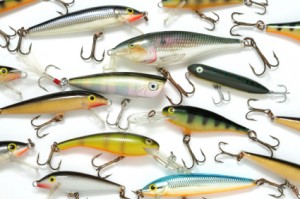You’ve probably heard people talking about going on a fishing trip and throwing everything but the kitchen sink at them without getting bit. Well, often, that is the main problem.
Some folks change lures far too often in the course of a day to give themselves a chance to catch anything. I know that when I first started fishing, this was the case for me too. Fortunately I have learned through lots of hours, days and years on the water that this tactic is generally counter-productive.
Don’t take my word for it. When Kevin VanDam won his fourth classic, he described what he had to do to win. A large part of his win was his patience and confidence in the lures he had chosen prior to getting to his spot. He made some adjustments while on the water during the tournament, but in the end, his choice of lures remained consistent.
Another case in point is Byron Velvick’s win at Clear Lake last year and the fact that he fished the entire final day with one main lure. Dean Rojas in his recent win stayed with his first choice for a full day until he made a lure change.
So all this begs the question, when do you make that change? There is no hard and fast rule but here are some factors that you might keep in mind while you’re on the water that may help.
Know Before You Go
We all have some idea what we want to use before we go fishing on any given day based on what we believe we will find when we get there. For instance, we are expecting water clarity to be good and we are fishing in spring during the pre-spawn. So we tie on a shallow running crank and maybe a spinnerbait. We get to the lake and find that for some reason, the water looks like Mississippi mud. This doesn’t mean that your choices are bad but you may have to adjust the color patterns and or the size of the lure that you’re using to accommodate these factors.
Or, let’s say that we want to fish slowly with some soft plastics and they just aren’t producing anything. So we change to some kind of a texas-rigged worm and again have absolutely no luck. Does this mean that the fish just won’t bite a slow presentation? No. Your only mistake may be where you’re putting the lure. You may be missing those subtle differences that could get you a bite such as, running your bait by hard and soft edges like weed and shade edges. Or maybe you can’t see a creek channel that the fish are using for migration to and from different water depths.
I have seen guys on the water who are so convinced that they have the right spot that they will try a lure for about 6 casts and then change lures. However, they don’t even consider moving from where they are or the fact that they are completely ignoring seasonal tendencies.
The MVF Rules
So here we go gang, the MVF rules of thumb for changing lures. I’m gonna’ go over this with one caveat, DO YOUR HOMEWORK FOR WHERE YOU’RE GOING TO FISH BEFORE YOU GET THERE!
Sorry for shouting but folks tend to ignore this part of the equation. When you’re on the water and casting a lure without getting any strikes, only change after you have thrown that lure for an hour. The reason is simple. It takes time to learn to use a bait effectively and six casts ain’t gonna’ do it!
If you have done your due diligence, gathered current local info for your target species and just aren’t seeing any results, then change your bait to something that exhibits different characteristics than you’re original choice.
A good example of that would be going from a spinnerbait to something like a swim-jig. Both of these baits are good choices for spring but the profiles are very different and one may be a lot closer in size and action to what the fish are keying on than the other. They also tend to produce better in different depths in the water column which could be the only adjustment you need to make. Another example would be replacing a jerk-bait with something like a wacky-rigged worm.
Change The Speed
Another reason to make a change is if you see that you are getting a lot of follows without the fish committing. When this happens, I will usually change the speed of my retrieve. Often this just means that the fish are getting too good a look at your lure. Speeding it up can be just what you need to get them to bite. Other times, it’s just a matter of down-sizing your offering for the fish to get to work. Playing with simple variables like this can turn a slow day into a really good one in a hurry.
When we go fishing, we usually have three to four lures pre-selected for the water we’re going to fish as well as a few choices on the back burner that we have in reserve. However, we always give our starters a chance to prove themselves before bringing in the bench.
I do hope that this will help some of you who are struggling with the question of when to change your lure. The real issue is to be completely absorbed with what you’re doing on the water and take your cues from what’s going on around you.
See ya’ on the water …
